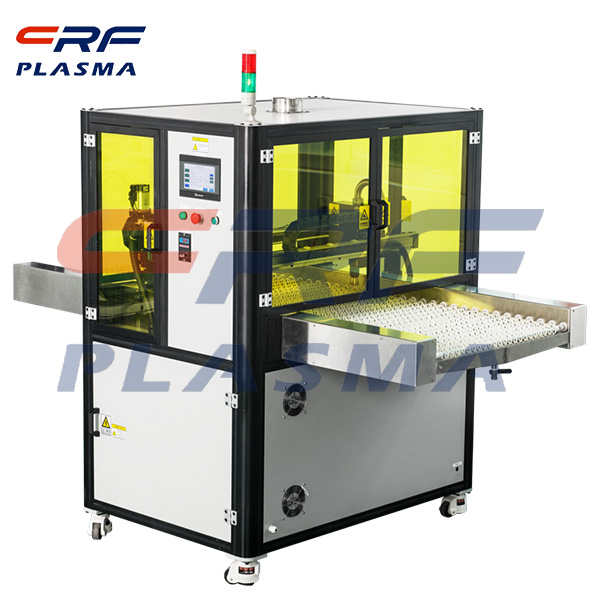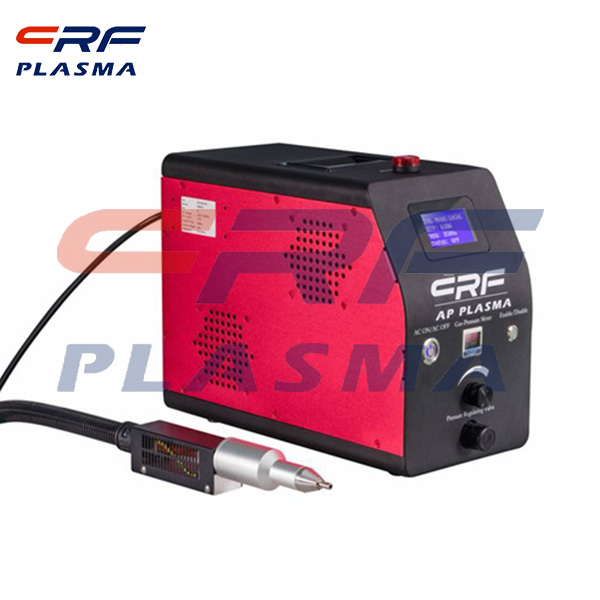
Welcome to Shenzhen Sing Fung Intelligent Manufacturing Co., Ltd.
E-mail:shaobo@sfi-crf.com
Technology principle of plasma nitriding equipment
- Categories:Technical Support
- Author:plasma cleaning machine-surface treatment equipment-CRF plasma machine-Sing Fung Intelligent Manufacturing
- Origin:
- Time of issue:2020-12-04
- Views:
(Summary description)General plasma nitridation process requires gas pressure of 3~10mbar to ensure complete contact between plasma and substrate. For the substrate with complex shape, such as surface trench or thread, the distribution of plasma nitride equipment parameters near the complex shape will be different to some extent, causing changes in the surrounding electric field, thus changing the ion concentration and ion bombardment energy in the region. If conventional plasma nitriding is used, ion collisions are more likely to occur in the plasma sheath, resulting in reduced ion energy and more difficult to activate oxide metal surfaces such as stainless steel. The complex shape of the substrate conditions can also lead to regional temperature overheating and the nitriding characteristics are different from other substrate conditions. However, due to the abnormal glow discharge caused by conventional plasma nitriding process, the discharge parameters are interrelated and coupled, so it is impossible to control the nitriding process by changing one discharge parameter alone. To solve this problem, the researchers developed a low-pressure plasma that does not glow abnormally when the pressure is below 10PA. In the presence of radio frequency, the filament produces a series of low-pressure plasmas that fill the processing space and contain a large number of active atoms, thus increasing the efficiency of nitriding. In the nitriding process of RF plasma equipment, the generation of plasma is separated from the control of substrate bias, so ionic energy and substrate surface flux can be controlled separately. Because the working pressure is low, the amount of air consumed is reduced accordingly. NH atoms are nitrated using a low-energy DC glow discharge. These highly active atoms are used for nitridation. The whole process requires an external power source to heat the workpiece in a process similar to gas nitridation. The process can not only control the surface topology, but also select whether the composite layer is formed, and control the thickness of the composite layer and the depth of the diffusion layer without changing the surface structure characteristics. If there are narrow cracks and holes in the metal surface, nitriding can be easily achieved by this process. Conventional plasma nitriding processes use DC or pulse abnormal glow discharge. The nitriding effect is good in low alloy steel and tool steel, but bad for stainless steel, especially austenitic structure stainless steel. The nitriding process precipitates CrN at high temperatures, so the metal surface is very hard and wear resistant, but the disadvantage is that it is easy to corrode. The modified layer prepared by this process contains a nitrogen-rich layer called extended austenite, which has been successfully solved by low temperature and low pressure discharge technology.
Technology principle of plasma nitriding equipment
(Summary description)General plasma nitridation process requires gas pressure of 3~10mbar to ensure complete contact between plasma and substrate. For the substrate with complex shape, such as surface trench or thread, the distribution of plasma nitride equipment parameters near the complex shape will be different to some extent, causing changes in the surrounding electric field, thus changing the ion concentration and ion bombardment energy in the region. If conventional plasma nitriding is used, ion collisions are more likely to occur in the plasma sheath, resulting in reduced ion energy and more difficult to activate oxide metal surfaces such as stainless steel. The complex shape of the substrate conditions can also lead to regional temperature overheating and the nitriding characteristics are different from other substrate conditions. However, due to the abnormal glow discharge caused by conventional plasma nitriding process, the discharge parameters are interrelated and coupled, so it is impossible to control the nitriding process by changing one discharge parameter alone.
To solve this problem, the researchers developed a low-pressure plasma that does not glow abnormally when the pressure is below 10PA. In the presence of radio frequency, the filament produces a series of low-pressure plasmas that fill the processing space and contain a large number of active atoms, thus increasing the efficiency of nitriding. In the nitriding process of RF plasma equipment, the generation of plasma is separated from the control of substrate bias, so ionic energy and substrate surface flux can be controlled separately. Because the working pressure is low, the amount of air consumed is reduced accordingly.
NH atoms are nitrated using a low-energy DC glow discharge. These highly active atoms are used for nitridation. The whole process requires an external power source to heat the workpiece in a process similar to gas nitridation. The process can not only control the surface topology, but also select whether the composite layer is formed, and control the thickness of the composite layer and the depth of the diffusion layer without changing the surface structure characteristics. If there are narrow cracks and holes in the metal surface, nitriding can be easily achieved by this process.
Conventional plasma nitriding processes use DC or pulse abnormal glow discharge. The nitriding effect is good in low alloy steel and tool steel, but bad for stainless steel, especially austenitic structure stainless steel. The nitriding process precipitates CrN at high temperatures, so the metal surface is very hard and wear resistant, but the disadvantage is that it is easy to corrode. The modified layer prepared by this process contains a nitrogen-rich layer called extended austenite, which has been successfully solved by low temperature and low pressure discharge technology.
- Categories:Technical Support
- Author:plasma cleaning machine-surface treatment equipment-CRF plasma machine-Sing Fung Intelligent Manufacturing
- Origin:
- Time of issue:2020-12-04 09:08
- Views:
Technology principle of plasma nitriding equipment:
General plasma nitridation process requires gas pressure of 3~10mbar to ensure complete contact between plasma and substrate. For the substrate with complex shape, such as surface trench or thread, the distribution of plasma nitride equipment parameters near the complex shape will be different to some extent, causing changes in the surrounding electric field, thus changing the ion concentration and ion bombardment energy in the region. If conventional plasma nitriding is used, ion collisions are more likely to occur in the plasma sheath, resulting in reduced ion energy and more difficult to activate oxide metal surfaces such as stainless steel. The complex shape of the substrate conditions can also lead to regional temperature overheating and the nitriding characteristics are different from other substrate conditions. However, due to the abnormal glow discharge caused by conventional plasma nitriding process, the discharge parameters are interrelated and coupled, so it is impossible to control the nitriding process by changing one discharge parameter alone.
To solve this problem, the researchers developed a low-pressure plasma that does not glow abnormally when the pressure is below 10PA. In the presence of radio frequency, the filament produces a series of low-pressure plasmas that fill the processing space and contain a large number of active atoms, thus increasing the efficiency of nitriding. In the nitriding process of RF plasma equipment, the generation of plasma is separated from the control of substrate bias, so ionic energy and substrate surface flux can be controlled separately. Because the working pressure is low, the amount of air consumed is reduced accordingly.
NH atoms are nitrated using a low-energy DC glow discharge. These highly active atoms are used for nitridation. The whole process requires an external power source to heat the workpiece in a process similar to gas nitridation. The process can not only control the surface topology, but also select whether the composite layer is formed, and control the thickness of the composite layer and the depth of the diffusion layer without changing the surface structure characteristics. If there are narrow cracks and holes in the metal surface, nitriding can be easily achieved by this process.
Conventional plasma nitriding processes use DC or pulse abnormal glow discharge. The nitriding effect is good in low alloy steel and tool steel, but bad for stainless steel, especially austenitic structure stainless steel. The nitriding process precipitates CrN at high temperatures, so the metal surface is very hard and wear resistant, but the disadvantage is that it is easy to corrode. The modified layer prepared by this process contains a nitrogen-rich layer called extended austenite, which has been successfully solved by low temperature and low pressure discharge technology.

Scan the QR code to read on your phone

TEL:0755-3367 3020 / 0755-3367 3019

E-mail:sales-sfi@sfi-crf.com

ADD:Mabao Industrial Zone, Huangpu, Baoan District, Shenzhen

















